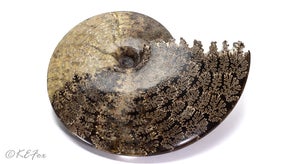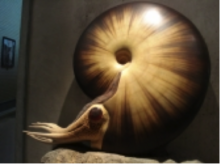412- 354 Million Years Ago
Highlights of the Devonian:
- Pectoral and pelvic fins of lobe-fish evolved into legs
- First seed-bearing plants spread across dry land, forming huge forests
- Ammonites appeared
- Trilobites, brachiopods and coral reefs were common
- Shelly Sea Creatures were abundant
The illustrations below are taken from a diorama in the museum, showing fossils from the Hungry Hollow formation at Arkona, Ontario, Canada. Stop by any time that the museum is open to have a look!

The first illustration is of a crinoid head (Sea lily).
Crinoids are members of the same family as starfish, sand dollars, and sea urchins. They may still be found today, although, they were most abundant in Paleozoic times. Some limestones are completely made of crinoid fragments. Crinoids attached themselves to the seafloor by their roots. A cup-shaped head (calix) is attached to the roots by a long stem. Arms extend upwards from the calix. The long flexible stem allows the crinoids to bend and wave in the ocean currents. They tend to live in warm shallow seas. Round coin like pieces of stem are commonly found at Arkona. Small heads (about one centimetre long) of a similar creature called a blastoid are also found at Arkona.
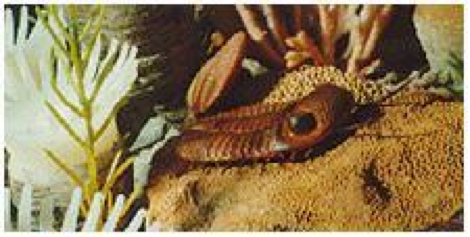
The next illustration is a trilobite.
The name trilobite means “Three-lobed creature”. They are possibly the second most famous fossil group after dinosaurs. They were first seen in the Cambrian, about 530 million years ago, and went extinct in the Permian period, about 245 million years ago. There were approximately 17,000 species throughout the Earth’s history (that we know of)! They are the single most diverse group of extinct organisms that ever existed, period! They are found on all continents.
Trilobites are also the earliest known anthropod (joint-legged animal such as insects or lobsters). They did not have a back bone. A modern relative is the horseshoe-crab. A cast of the largest trilobite in the world is on display in the University of Waterloo Earth Sciences Museum. The original specimen was found in Churchill, Manitoba by David Rudkin of the Royal Ontario Museum. The smaller specimen from Churchill, Manitoba was collected by a University of Waterloo correspondence student before Dave Rudkin found his specimen.
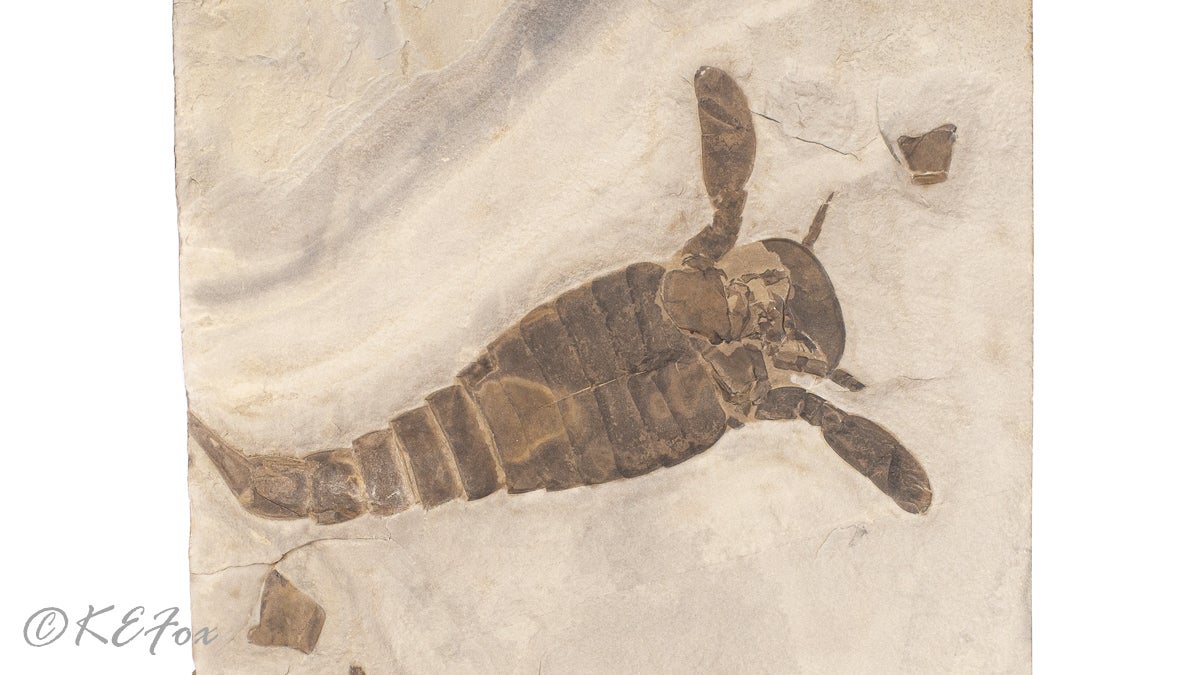
A fossil Eurypterus remipes (above) from the Silurian period is also on display with the trilobites. These animals had an average length of about 20cm or 7.9 inches, but the largest known specimen was 130cm (4.3feet)! They were the largest anthropods (joint-legged animal such as insects or lobsters) to have existed. Eurpterids are believed to have crawled along on the seafloor, using their grasping pincers to seize their prey. It is believed that the larger specimens could have possibly swum using its arms as paddles.
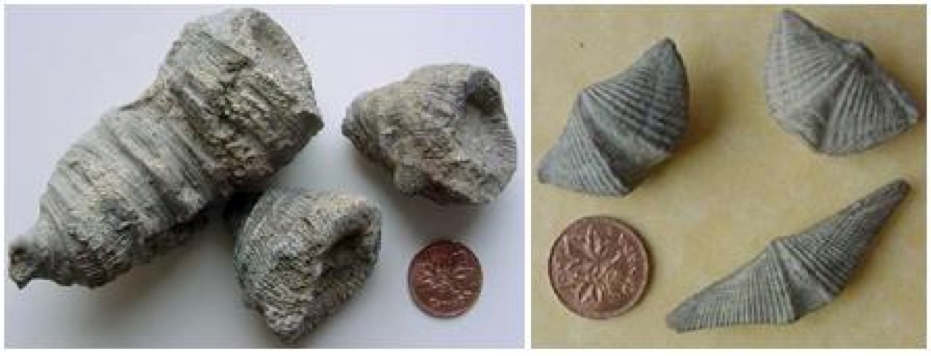
The picture on the left is Heliophyllum halli –Rugose Coral, an extinct type of solitary coral. Hungry Hollow Formation, Arkona, Ontario.
Rugose Coral, otherwise known as Horn Coral, is a type of prehistoric coral. Some Rugose Corals were so large they reached over a metre in length! It is believed that these corals possessed sting cells and tentacles to capture prey. They were technically carnivores, but ate food so small they are often referred to as microcarnavores.
The picture on the right is of Brachiopods. Short ones are Mucrospirifer thedfordesis and the long ones are Mucrospirifer arkonesis.
Brachiopods lived on the ocean floor. They are made up of two hard shells, and a soft inside body. They are common fossils from the Devonian age. These prehistoric creatures fed on microscopic organisms and bits of organic matter.
An ammonite display is available across from the Devonian Hungry Hollow Display
Ammonites were soft-bodied, predatory, squid-like creatures that lived in coil-shaped shells. They had long tentacles, well developed eyes and a sharp, beak-like jaw. They had to constantly build new shell as they grew, but only lived in the outer chamber. Ammonites swam through the ocean. They are related to modern-day squid and octopi. While ammonites were commonly the size of your hand, they could grow huge (up to three metres across)!
